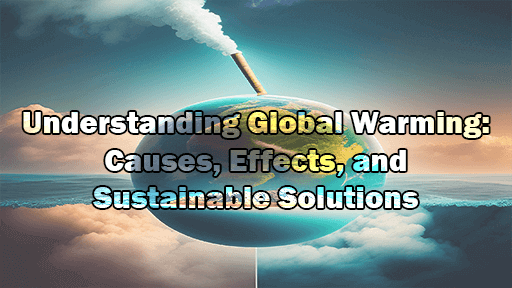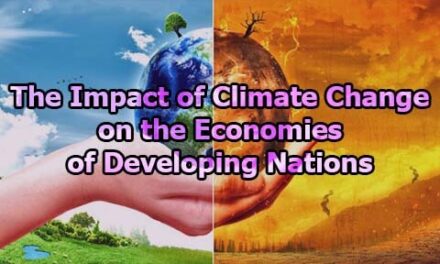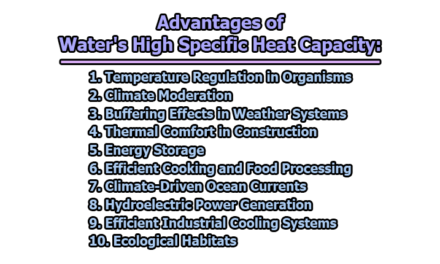Understanding Global Warming:
Global warming is a serious environmental issue that has captured the attention of scientists, policymakers, and the general public in recent decades. The Earth’s climate is undergoing significant changes due to human activities, leading to a rise in average global temperatures. This article aims to provide an understanding of global warming, covering its definition, causes, effects, and potential solutions.
Definition of Global Warming:
Global warming refers to the long-term increase in Earth’s average surface temperature, primarily caused by human activities that release greenhouse gases into the atmosphere. Greenhouse gases, such as carbon dioxide (CO2), methane (CH4), and nitrous oxide (N2O), trap heat from the sun and prevent it from escaping back into space. This trapped heat contributes to the warming of the planet, creating a range of environmental challenges.
Causes of Global Warming:
The causes of global warming are complex and interconnected, primarily stemming from human activities that release greenhouse gases into the atmosphere. Greenhouse gases trap heat from the sun and prevent it from escaping back into space, leading to a gradual increase in the Earth’s average surface temperature. Understanding the various causes is crucial for developing effective strategies to mitigate and adapt to the impacts of global warming. Here, we delve into the key causes:
1. Burning of Fossil Fuels: The combustion of fossil fuels—coal, oil, and natural gas—is the largest contributor to anthropogenic greenhouse gas emissions. When these fuels are burned for energy production in power plants, transportation, and industrial processes, carbon dioxide (CO2) is released into the atmosphere. CO2 is a major greenhouse gas that persists in the atmosphere for centuries, contributing significantly to the enhanced greenhouse effect.
2. Deforestation: Forests act as crucial carbon sinks, absorbing CO2 from the atmosphere during photosynthesis. However, widespread deforestation, driven by logging, agriculture, and urbanization, reduces the number of trees available to absorb and store carbon. The release of stored carbon during deforestation adds to the concentration of greenhouse gases in the atmosphere, amplifying the greenhouse effect.
3. Industrial Processes: Certain industrial activities release potent greenhouse gases, including methane (CH4) and nitrous oxide (N2O). Methane is produced during the extraction and processing of fossil fuels, as well as from livestock digestion and manure management in agriculture. Nitrous oxide is released from agricultural and industrial activities, including the use of synthetic fertilizers. These gases have higher warming potentials compared to CO2, contributing to the overall greenhouse effect.
4. Agricultural Practices: Agriculture is a significant source of greenhouse gas emissions, primarily methane and nitrous oxide. Livestock, especially cattle, produce methane during digestion through a process called enteric fermentation. Additionally, the use of nitrogen-based fertilizers in agriculture releases nitrous oxide. Changes in land use for agriculture also contribute to the overall warming effect.
5. Land Use Changes: Alterations in land use, such as urbanization, deforestation, and conversion of natural landscapes into agricultural areas, impact the Earth’s surface albedo and contribute to global warming. Darker surfaces, like asphalt and concrete, absorb more sunlight and heat, leading to localized warming. Changes in land use also disrupt ecosystems, releasing stored carbon and influencing regional climates.
6. Waste Management: Improper waste management, particularly the decomposition of organic waste in landfills, generates methane emissions. Methane produced in landfills contributes to the greenhouse effect. Adopting more sustainable waste management practices, such as composting and recycling, can help reduce these emissions.
7. Use of Fluorinated Gases: Fluorinated gases, such as hydrofluorocarbons (HFCs), perfluorocarbons (PFCs), sulfur hexafluoride (SF6), and nitrogen trifluoride (NF3), are synthetic compounds with high global warming potentials. These gases, used in various industrial applications, contribute to the enhanced greenhouse effect. International efforts, such as the Montreal Protocol, aim to phase out the use of some of these gases due to their detrimental impact on the climate.
8. Black Carbon: Black carbon, also known as soot, is a fine particulate matter released from incomplete combustion of fossil fuels and biomass. When deposited on snow and ice, black carbon reduces their reflectivity, accelerating melting. In certain regions, black carbon contributes to regional warming and can have significant impacts on local climates.
Effects of Global Warming:
The effects of global warming are far-reaching and have profound implications for the Earth’s climate, ecosystems, and human societies. As the planet experiences a sustained increase in average temperatures, a cascade of environmental changes ensues. Understanding these effects is crucial for developing strategies to mitigate the impacts and adapt to the evolving climate. Here is an exploration of the effects of global warming:
1. Rising Temperatures: Global warming manifests as a consistent increase in average temperatures across the planet. This warming trend is observed in rising surface temperatures, warming oceans, and increased frequency of heatwaves. Higher temperatures have widespread implications for weather patterns, ecosystems, and human health.
2. Melting Ice and Rising Sea Levels: The warming climate contributes to the melting of glaciers and polar ice caps, leading to a rise in sea levels. This phenomenon is fueled by both the warming atmosphere and ocean temperatures. Melting ice poses a threat to low-lying coastal areas, contributing to coastal erosion, inundation, and increased vulnerability of coastal communities.
3. Ocean Acidification: The absorption of excess carbon dioxide (CO2) by the world’s oceans results in ocean acidification. As CO2 dissolves in seawater, it forms carbonic acid, lowering the pH of the oceans. Ocean acidification has detrimental effects on marine life, particularly organisms with calcium carbonate shells or skeletons, such as corals, mollusks, and certain plankton species.
4. Extreme Weather Events: Global warming intensifies the frequency and severity of extreme weather events. This includes more frequent and intense hurricanes, typhoons, droughts, heatwaves, heavy rainfall, and flooding. These events can lead to widespread devastation, causing loss of life, property damage, and disruptions to ecosystems and agriculture.
5. Changes in Precipitation Patterns: Global warming alters precipitation patterns, leading to changes in regional climates. Some areas experience increased rainfall and flooding, while others face more prolonged droughts. These shifts can have significant impacts on water availability, agriculture, and the sustainability of ecosystems.
6. Disruption of Ecosystems and Biodiversity Loss: Changes in temperature and precipitation patterns can disrupt ecosystems, affecting the distribution and behavior of plant and animal species. Some species may be forced to migrate to more suitable habitats, leading to shifts in biodiversity and potential extinctions. Ecosystems such as coral reefs, polar-regions, and tropical rainforests are particularly vulnerable.
7. Threats to Agriculture and Food Security: Changes in temperature, precipitation, and the frequency of extreme weather events pose risks to global agriculture. Shifts in growing seasons, increased pests and diseases, and water scarcity can negatively impact crop yields. This poses threats to food security, particularly in vulnerable regions with limited adaptive capacity.
8. Increased Health Risks: Global warming contributes to the spread of infectious diseases, as warmer temperatures create more favorable conditions for the proliferation of vectors such as mosquitoes and ticks. Heatwaves also pose direct health risks, leading to heat-related illnesses and mortality. Vulnerable populations, including the elderly and those with pre-existing health conditions, are at higher risk.
9. Impact on Freshwater Resources: Changes in precipitation patterns, coupled with increased evaporation due to higher temperatures, can impact freshwater availability. Some regions may face more frequent and severe droughts, leading to water shortages. Changes in snowmelt patterns can also affect downstream water availability.
10. Threats to Arctic and Antarctic Environments: The polar-regions are particularly sensitive to global warming, experiencing amplified temperature increases. This leads to the melting of sea ice, affecting polar ecosystems and the wildlife that depends on ice-covered habitats. Changes in these regions also contribute to global sea-level rise.
11. Social and Economic Disruptions: The cumulative effects of global warming have wide-ranging socio-economic implications. Disruptions to agriculture, water resources, and infrastructure, as well as the increased frequency of extreme events, can lead to displacement, migration, and conflicts over resources. Vulnerable communities, especially in low-lying coastal areas and developing countries, are disproportionately affected.
Sustainable Solutions to Global Warming:
Addressing global warming requires a multifaceted approach involving individuals, communities, businesses, and governments. Implementing effective solutions is essential to mitigate the impacts of climate change and transition towards a more sustainable future. Here is an exploration of solutions to global warming:
1. Transition to Renewable Energy: A significant portion of global greenhouse gas emissions comes from the burning of fossil fuels for energy. Transitioning to renewable energy sources such as solar, wind, hydro, and geothermal power is a critical step in reducing emissions. Governments and businesses should invest in renewable energy infrastructure, support research and development, and incentivize the adoption of clean energy technologies.
2. Energy Efficiency: Improving energy efficiency in various sectors can significantly reduce greenhouse gas emissions. This includes advancements in industrial processes, transportation, and building design. Energy-efficient technologies, practices, and policies can lower overall energy consumption, decreasing the environmental impact associated with energy production.
3. Afforestation and Reforestation: Forests play a crucial role in sequestering carbon dioxide. Afforestation, which involves planting trees in areas that were not previously forested, and reforestation, which involves replanting trees in deforested areas, can help absorb excess carbon from the atmosphere. Conservation and sustainable forest management practices are also essential for maintaining healthy ecosystems.
4. Sustainable Agriculture Practices: Agriculture is a significant source of greenhouse gas emissions, but adopting sustainable practices can help mitigate its impact. This includes precision farming, agroforestry, organic farming, and regenerative agriculture. These approaches enhance soil health, reduce the need for synthetic fertilizers, and sequester carbon in the soil.
5. Carbon Capture and Storage (CCS): Carbon capture and storage technologies capture CO2 emissions from industrial processes and power plants before they are released into the atmosphere. The captured carbon is then transported and stored underground, preventing it from contributing to the greenhouse effect. Research and development efforts in CCS are crucial for scaling up this technology.
6. Promotion of Electric Vehicles: Transportation is a major contributor to greenhouse gas emissions, particularly from the combustion of fossil fuels in vehicles. Encouraging the use of electric vehicles, improving public transportation infrastructure, and investing in alternative transportation modes can help reduce emissions from the transportation sector.
7. International Cooperation: Addressing global warming requires coordinated efforts on an international scale. International agreements and frameworks, such as the Paris Agreement, play a crucial role in bringing countries together to set emission reduction targets and share best practices. Continued collaboration is essential for achieving meaningful progress in mitigating climate change.
8. Circular Economy Practices: Adopting a circular economy model, which prioritizes reducing waste, recycling, and reusing materials, can help lower the environmental impact of production and consumption. This includes reducing single-use plastics, promoting sustainable packaging, and encouraging the responsible consumption of goods and services.
9. Green Building Design: Sustainable building practices, including energy-efficient designs, green roofs, and the use of eco-friendly materials, contribute to reducing the carbon footprint of the construction industry. Implementing green building standards and certifications encourages the development of environmentally conscious structures.
10. Public Awareness and Education: Increasing public awareness about the causes and consequences of global warming is crucial for garnering support for sustainable practices. Education campaigns can inspire individuals to adopt eco-friendly behaviors in their daily lives, such as reducing energy consumption, using public transportation, and making sustainable choices in consumer habits.
11. Policy and Regulatory Measures: Governments play a pivotal role in addressing global warming through the implementation of policies and regulations. This includes setting emission reduction targets, incentivizing sustainable practices, and imposing penalties for excessive carbon emissions. Policy frameworks that support renewable energy deployment and sustainable development are critical for achieving long-term environmental goals.
12. Innovation and Research: Continued investment in research and development is essential for discovering new technologies and solutions to address global warming. Innovation in areas such as clean energy, carbon capture technologies, and sustainable agriculture practices can contribute to more effective and scalable solutions.
In conclusion, global warming poses a severe threat to the planet’s ecosystems, human societies, and future generations. While the challenges are immense, implementing sustainable solutions and adopting environmentally friendly practices can mitigate the impact of global warming. It is essential for individuals, communities, businesses, and governments to work collaboratively to address this pressing issue and create a more sustainable and resilient future.

Assistant Teacher at Zinzira Pir Mohammad Pilot School and College










